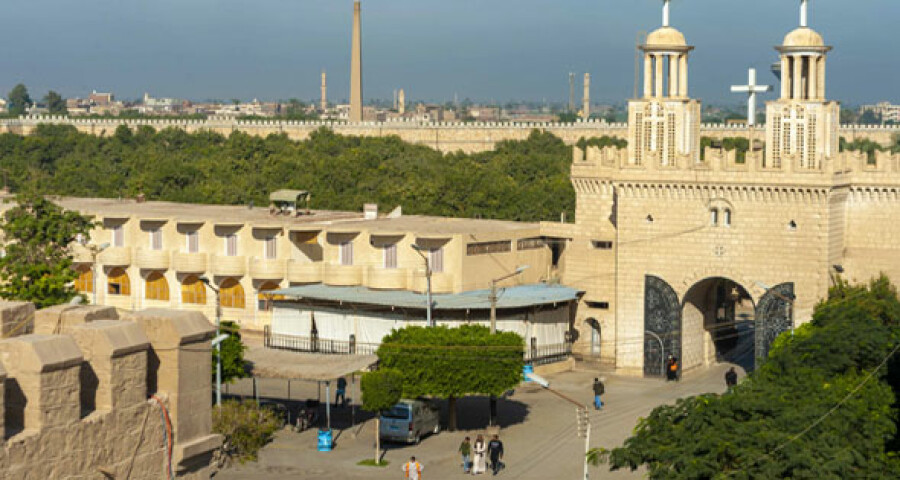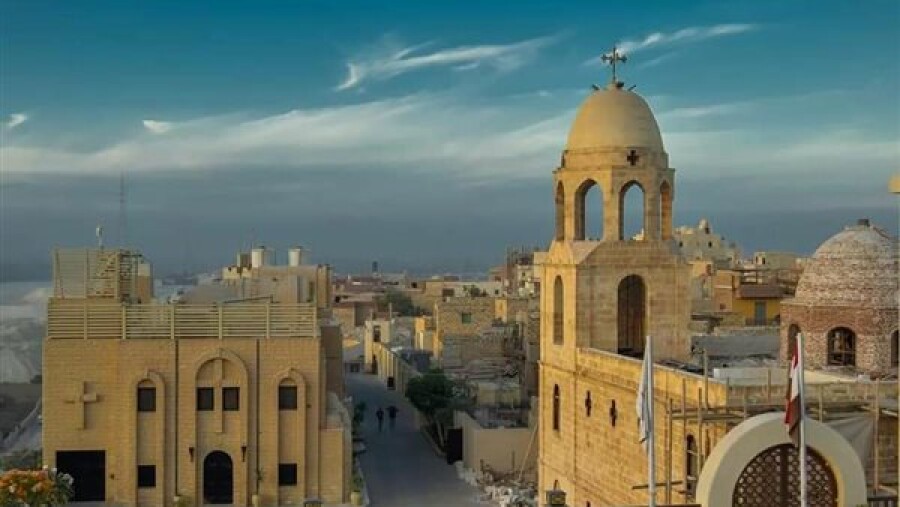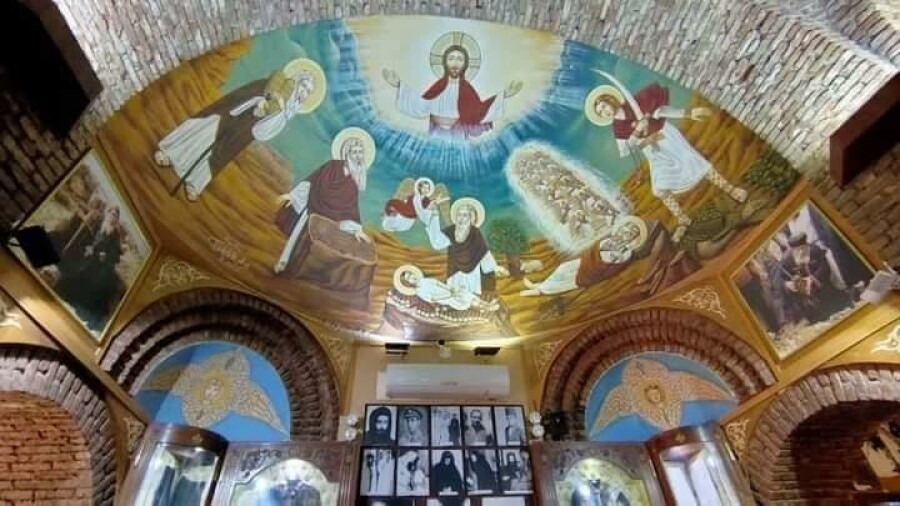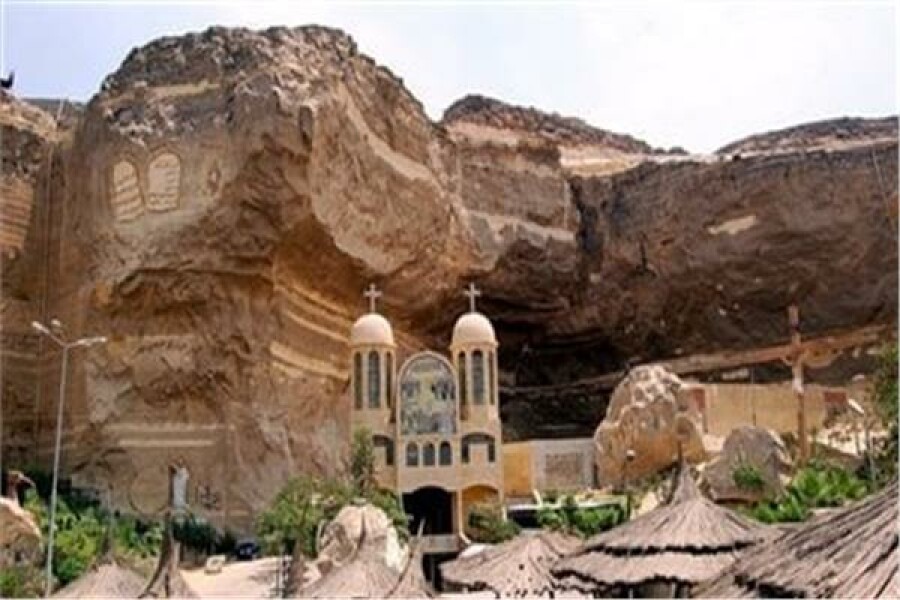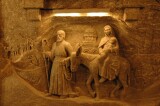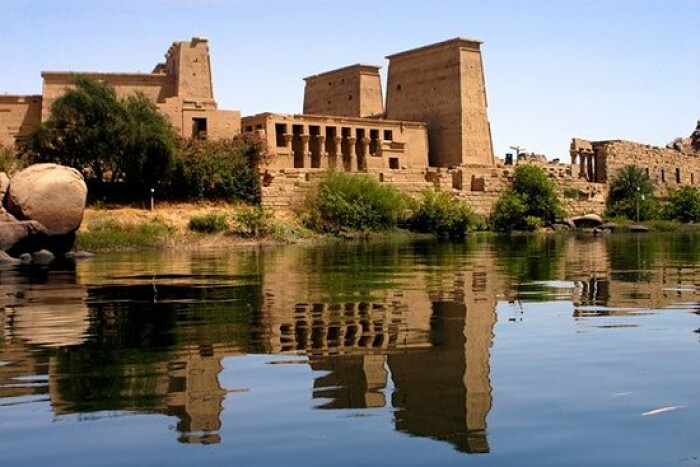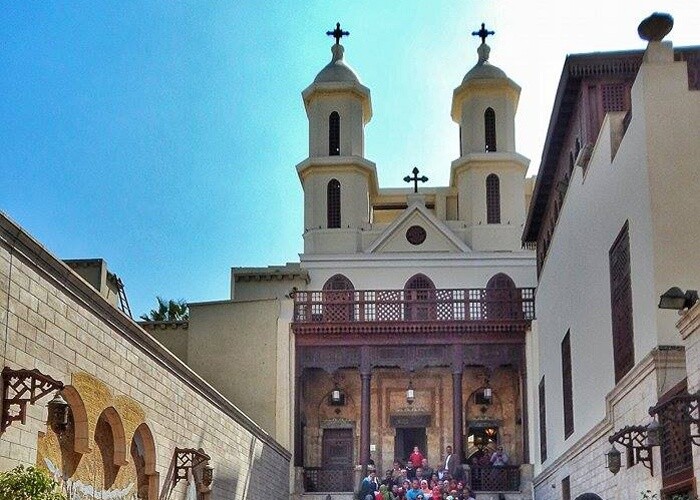Holy Family - 1 Night Minia / 1 Night Asiut
Minya, Asiut, Tuna El Gebel, Beni Hassan, Tal El Amarna, Gabal El Ter And Al Maharak.
Excellent
4.9/5
Duration
3 Days
Type
Private
Run
Everyday
Location
Minya, Asiut, Tuna El Gebel, Beni Hassan, Tal El Amarna, Gabal El Ter And Al Maharak
Overview
The journey of the holy family in Egypt lasted about four years they traveled through Egypt riding a donkey and sailing up the Nile River arriving at middle Egypt. Following the footsteps of the holy family is not only a great blessing, but it is also a historical experience. Crossing the Nile to Gable El Teir you will see the cave of the holy family and the oven where they baked their bread you will also visit the rock-cut tombs of Beni Hassan the city of Akhenaten known as the first monotheist ever known in the history. Finally, you will ascend the mountain of Dronka where the holy family had sheltered for days.
Itinerary
Day 1
Breakfast at your hotel in Cairo then you travel by air-conditioned vehicle accompanied by your professional tour guide to Samalot city where you visit one of the most important landmarks that the Holy Family visited. St. Mary’s Monastery Gable El Teir (Mountain of birds) because During the winter birds used to flock there, also known by The Bakarah (pulley) that was used to obtain water from the Nile. Also called the Kaf Monastery or ‘Palm’ Monastery: Ancient manuscripts narrate that while the Holy Family was sailing. One of the rocks fell and headed towards their boat then, our Lord Jesus extended His hand and shielded the boat and, the Lord’s palm was printed on this rock, now kept at one of the British museums. The ancient church is from the 4th century ordered to be carved by Queen Helen
Lunch in a local restaurant later you continue visiting the Necropolis of Beni Hassan
The tombs date mostly to Dynasties XI and XII .12 tombs are decorated, and four are open to visitor characterized by painted scenes of daily life, recreation and military activities.
Tomb of Baqet III -BH15
Baqet was provincial governor of Menat-Khufu (modern el-Minya) during the later years of Dynasty XI. The walls of the tomb have many painted scenes depicting the desert hunt, Industrial scenes of weaving and spinning, hunting and fishing in the marshes, catching birds and gathering papyrus, battle scenes, wrestlers, funerary scenes, also includes recreational scenes of sports and playing senet
Tomb of Khety -BH17
was the son of Baqet. His tomb is similar to that of his father’s; the walls of the tomb are decorated with scenes of fowling and the papyrus harvest, hunting in the desert. Khety and his wife are shown presiding over the activities and watch women dancing and playing games, Clappers and dancers and musicians are shown before Khety’s statue being dragged on a sledge. There are long scenes of men practising unarmed combat or wrestling. The movements can be seen easily because the bodies are painted in contrasting shades
Tomb of Amenemhet- BH2
Dates to Dynasty XII, he was the last governor of the province during the reign of Senwosret I. The walls have scenes of agriculture and industries, hunting in the desert, military activities and funeral rites with offering-bringers. Amenemhet sits with his wife at a table containing all the produce of his land.
Tomb of Khnumhotep II- BH3
Khnumhotep II was a successor of Amenemhet His titles include ‘Hereditary Chief’ ‘King’s Acquaintance’ and ‘One who is Beloved of his God’. The scenes are more colorful and livelier and make it the most interesting of the Beni Hasan tombs. On the north wall is a famous scene depicting a caravan of Asiatic in their striped robes bringing gazelles and other items to trade, also two beautiful scenes of Khnumhotep with his family, fowling and snaring birds in the marshes in a papyrus skiff. On the base of the wall can see Khnumhotep’s well-preserved autobiographical text. There is a magnificent view from up the mountain.
Dinner and overnight in the hotel.
Lunch in a local restaurant later you continue visiting the Necropolis of Beni Hassan
The tombs date mostly to Dynasties XI and XII .12 tombs are decorated, and four are open to visitor characterized by painted scenes of daily life, recreation and military activities.
Tomb of Baqet III -BH15
Baqet was provincial governor of Menat-Khufu (modern el-Minya) during the later years of Dynasty XI. The walls of the tomb have many painted scenes depicting the desert hunt, Industrial scenes of weaving and spinning, hunting and fishing in the marshes, catching birds and gathering papyrus, battle scenes, wrestlers, funerary scenes, also includes recreational scenes of sports and playing senet
Tomb of Khety -BH17
was the son of Baqet. His tomb is similar to that of his father’s; the walls of the tomb are decorated with scenes of fowling and the papyrus harvest, hunting in the desert. Khety and his wife are shown presiding over the activities and watch women dancing and playing games, Clappers and dancers and musicians are shown before Khety’s statue being dragged on a sledge. There are long scenes of men practising unarmed combat or wrestling. The movements can be seen easily because the bodies are painted in contrasting shades
Tomb of Amenemhet- BH2
Dates to Dynasty XII, he was the last governor of the province during the reign of Senwosret I. The walls have scenes of agriculture and industries, hunting in the desert, military activities and funeral rites with offering-bringers. Amenemhet sits with his wife at a table containing all the produce of his land.
Tomb of Khnumhotep II- BH3
Khnumhotep II was a successor of Amenemhet His titles include ‘Hereditary Chief’ ‘King’s Acquaintance’ and ‘One who is Beloved of his God’. The scenes are more colorful and livelier and make it the most interesting of the Beni Hasan tombs. On the north wall is a famous scene depicting a caravan of Asiatic in their striped robes bringing gazelles and other items to trade, also two beautiful scenes of Khnumhotep with his family, fowling and snaring birds in the marshes in a papyrus skiff. On the base of the wall can see Khnumhotep’s well-preserved autobiographical text. There is a magnificent view from up the mountain.
Dinner and overnight in the hotel.
Day 2
After breakfast, you leave the hotel and go further to visit Amarna about 70 km south to Menia, to the north and south of the city of Akhenaton There are the tombs of the officials of the court of Akhenaton, containing many scenes depicting the royal family in the distinctive style of Amarna art. Between the north and south tombs lies the entrance to the Royal tomb in which the king’s own tomb is carved
Tomb of Ay -25 one of the southern tombs
Ay was actually buried in his royal tomb at Thebes, but his Amarna tomb reflects his earlier powerful position in the city. His titles include ‘God’s father’, ‘Fan-bearer on the Right Hand of the King’ and ‘Overseer of all the Horses of the Lord of the Two Lands’, as well as ‘Royal Scribe’ and ‘Chief of Archers’. In the entrance to the tomb on the left-hand wall Ay is depicted with his wife Tiye in a very beautiful carving below the royal family worshiping the Aten. On the right-hand side, Ay and his wife adore the god Aten with a relief of the ‘Hymn to God Aten
Tomb of Meryre 4 one of the northern tombs
The most beautifully decorated and most elaborate of the Northern tombs. He was 'High Priest of Aten and ‘Fan bearer on the King’s Right Hand’. In the entrance to the antechamber, Meryre adores the rising sun, with prayers to the Aten. At either side of the antechamber, false doors have been carved and decorated with tall floral standards and cartouches of the King and the Queen and the Aten. To the right of the doorway is a colorful depiction of Akhenaten and his wife Nefertiti with two of their daughters (Meritaten and Meketaten), presenting a laden offering table to the Aten. A multicolored rainbow is shown below the sun disc. Meryre as high priest is the figure in front of the King. Following the wall around to the left, Meryre accompanies the royal family on a visit to the Great Aten Temple. Many soldiers, attendants and foreign representatives accompany the procession.
Amarna Royal Tomb 26
The tomb was first found in the 1880s by locals it was already robbed and damaged it may have been designed to allow the sun rays to illuminate the tomb each morning. In one of the side rooms, there are important scenes depicting the king and queen mourning the death of a woman on a funeral procession Lunch in a local restaurant and continue visiting the monastery El Moharaq. This is the most important location, where the Holy Family settled for more than 6 months. It was at this location that the angel appeared to St. Joseph the Carpenter and said to him, “Arise, take the child and His mother, and go to the land of Israel, for those who sought the young Child’s life are dead. (Matthew 2:20) The altar of this church consists of the rock where our Lord Jesus used to lay asleep. With the construction of the church in this place theologians said that the prophecy of Isaiah was fulfilled when he said, “In that day there will be an altar to the LORD in the midst of the land of Egypt, and a pillar to the LORD at its border.” Isaiah 19:19. This church is from the first century and the lord Christ Himself consecrated this altar.
After finishing the tour, you go further to the hotel in Asiut city where you check in, get dinner and sleep.
Tomb of Ay -25 one of the southern tombs
Ay was actually buried in his royal tomb at Thebes, but his Amarna tomb reflects his earlier powerful position in the city. His titles include ‘God’s father’, ‘Fan-bearer on the Right Hand of the King’ and ‘Overseer of all the Horses of the Lord of the Two Lands’, as well as ‘Royal Scribe’ and ‘Chief of Archers’. In the entrance to the tomb on the left-hand wall Ay is depicted with his wife Tiye in a very beautiful carving below the royal family worshiping the Aten. On the right-hand side, Ay and his wife adore the god Aten with a relief of the ‘Hymn to God Aten
Tomb of Meryre 4 one of the northern tombs
The most beautifully decorated and most elaborate of the Northern tombs. He was 'High Priest of Aten and ‘Fan bearer on the King’s Right Hand’. In the entrance to the antechamber, Meryre adores the rising sun, with prayers to the Aten. At either side of the antechamber, false doors have been carved and decorated with tall floral standards and cartouches of the King and the Queen and the Aten. To the right of the doorway is a colorful depiction of Akhenaten and his wife Nefertiti with two of their daughters (Meritaten and Meketaten), presenting a laden offering table to the Aten. A multicolored rainbow is shown below the sun disc. Meryre as high priest is the figure in front of the King. Following the wall around to the left, Meryre accompanies the royal family on a visit to the Great Aten Temple. Many soldiers, attendants and foreign representatives accompany the procession.
Amarna Royal Tomb 26
The tomb was first found in the 1880s by locals it was already robbed and damaged it may have been designed to allow the sun rays to illuminate the tomb each morning. In one of the side rooms, there are important scenes depicting the king and queen mourning the death of a woman on a funeral procession Lunch in a local restaurant and continue visiting the monastery El Moharaq. This is the most important location, where the Holy Family settled for more than 6 months. It was at this location that the angel appeared to St. Joseph the Carpenter and said to him, “Arise, take the child and His mother, and go to the land of Israel, for those who sought the young Child’s life are dead. (Matthew 2:20) The altar of this church consists of the rock where our Lord Jesus used to lay asleep. With the construction of the church in this place theologians said that the prophecy of Isaiah was fulfilled when he said, “In that day there will be an altar to the LORD in the midst of the land of Egypt, and a pillar to the LORD at its border.” Isaiah 19:19. This church is from the first century and the lord Christ Himself consecrated this altar.
After finishing the tour, you go further to the hotel in Asiut city where you check in, get dinner and sleep.
Day 3
Breakfast at the hotel and check out, you will visit St, Mary’s Monastery on Mount Asiut called Doronka the Mountain is located about 8 kilometers away from the city of Asyut, used as a quarry in Pharaonic times. The Holy Family took refuge on a cave at the top of the mountain, for a few days. This cave later was converted into a church. Later you go towards the north visiting Ashmonin that was a cult centre of Thoth, the god of wisdom, healing and writing. And was called Hermopolis Magna during the Greek period as god Hermes was associated with the Egyptian Thoth, there you will see his two famous colossal baboon statues. About 7 km towards the desert is the necropolis of Tuna el Gabl there you visit the family tomb of Petosiris, a high priest of Thoth lived around 300 BC. This temple-tomb is unique, built-in pure Egyptian style with a pillared hall at ground level and a cult chapel behind, with the subterranean burial chamber; on the walls, you will see scenes of agriculture and industries as well as daily life.
Lunch in a local restaurant, and will be transferred to your hotel in Cairo.
Lunch in a local restaurant, and will be transferred to your hotel in Cairo.
Included/Excluded
- Meet and greet service by our representatives upon your airport arrival.
- Transfers in private vehicle with air conditioning.
- English-speaking tour guide during your excursions.
- 1 Bottled mineral water every day.
- 3 Day Tours.
- Main Entrance Fees.
- Excursions according to the itinerary.
- This itinerary could be changed in order according to the circumstances of service not to be canceled.
- 3 meals during visits at a local restaurant.
- Accommodation in Minia for 1 night, including half board.
- Accommodation in Asiut for 1 night, including half board.
- Egyptian SIM card, per family, for your unlocked mobile device for your stay in Egypt.
- Tourism Police Permission.
- Tax.
- Transfers in private vehicle with air conditioning.
- English-speaking tour guide during your excursions.
- 1 Bottled mineral water every day.
- 3 Day Tours.
- Main Entrance Fees.
- Excursions according to the itinerary.
- This itinerary could be changed in order according to the circumstances of service not to be canceled.
- 3 meals during visits at a local restaurant.
- Accommodation in Minia for 1 night, including half board.
- Accommodation in Asiut for 1 night, including half board.
- Egyptian SIM card, per family, for your unlocked mobile device for your stay in Egypt.
- Tourism Police Permission.
- Tax.
- Personal spending.
- Optional Activities.
- Drinks.
- Tipping.
- Anything not mentioned above.
- Optional Activities.
- Drinks.
- Tipping.
- Anything not mentioned above.


